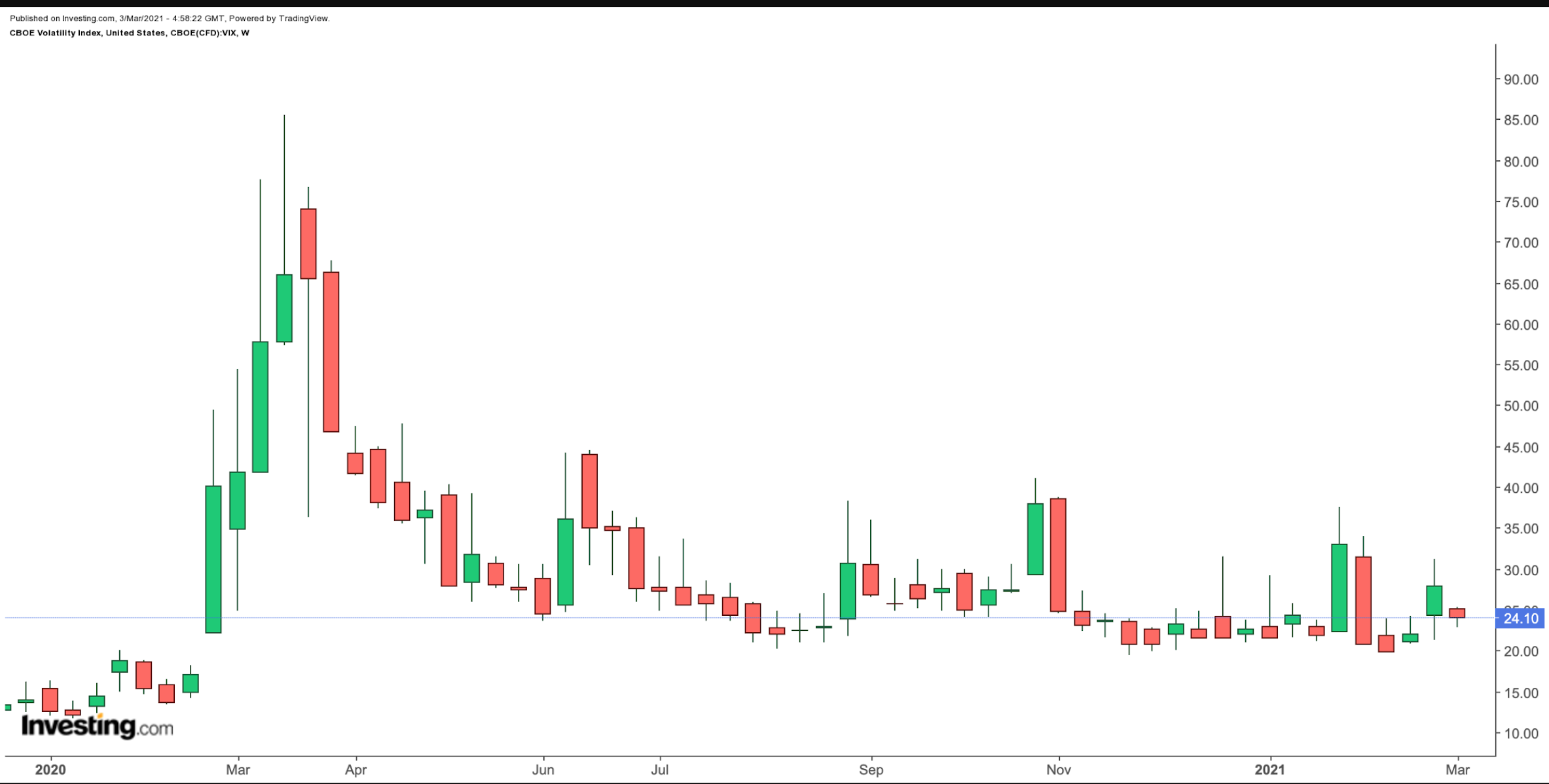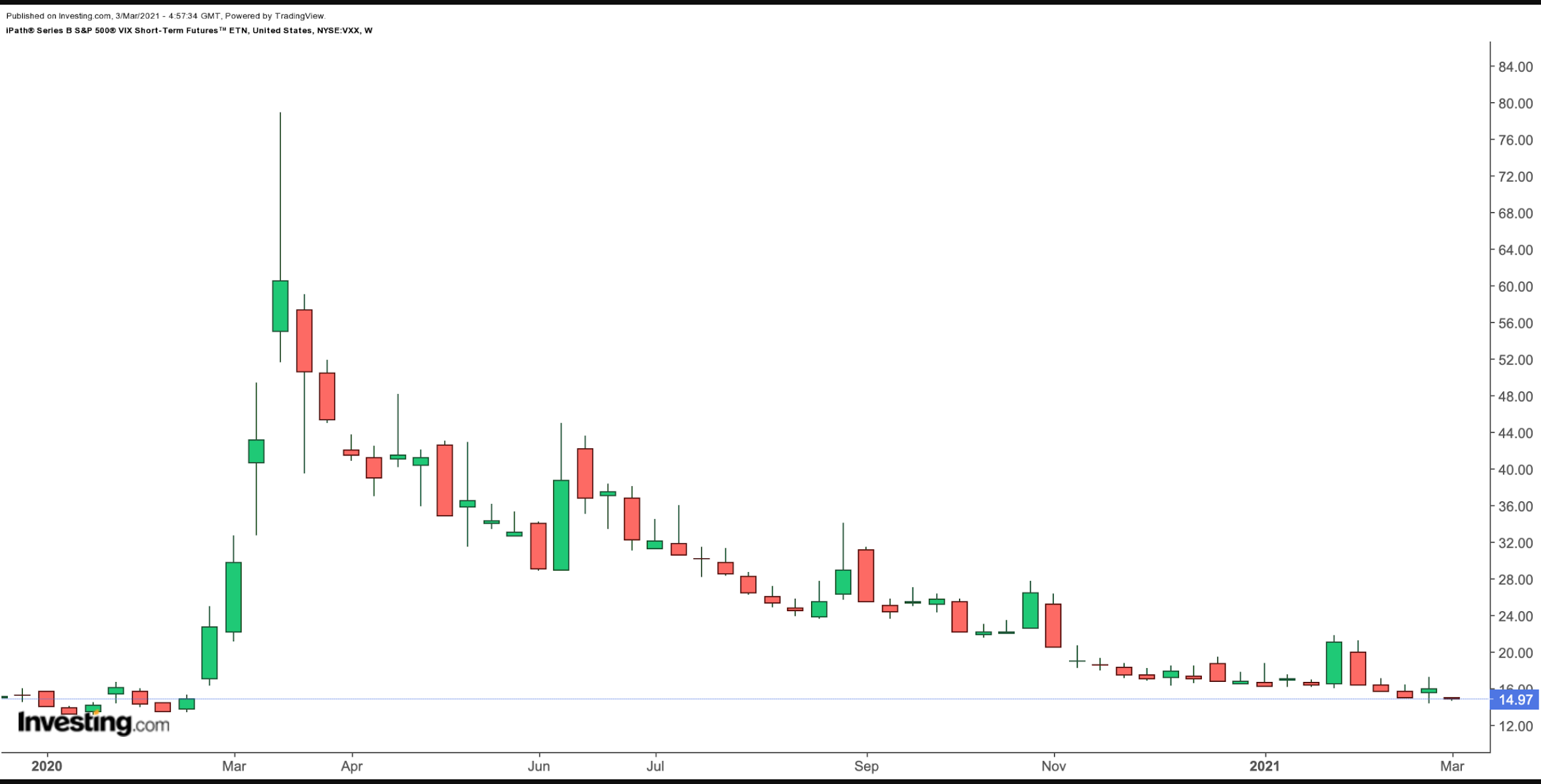High levels of market volatility have been a defining feature of the past year. But even during "quieter" years, market volatility is inevitable—especially in the short-run.
Wall Street pays significant attention to the CBOE Volatility Index, the benchmark for US stock market volatility. The VIX became the first implied volatility index when it was introduced by the Chicago Board Options Exchange (CBOE) in 1993.

Implied volatility is derived from the cost of the option on an asset (such as an index or a stock). It is a dynamic number, reflecting market developments. For example, when a company is about to release earnings or makes a major announcement on a product, such as a potential vaccine, traders may revise trading patterns on specific options.
Its calculation was later revised in 2003. It is also known as the "fear-index" or “fear-gauge.” It is currently hovering at 24. A year ago, it was well over 80. Yet, levels could easily pick up again in the coming weeks.
Navigating periods of increased volatility can be unnerving for some investors. Diversification is one of the tools to manage risk when volatility increases.
There are also other financial products that could be used, for shorter periods of time, especially by more experienced market participants.
Today, we'll look at an exchange-traded note (ETN) that could be appropriate for short-term traders. We previously covered ETNs. Therefore, readers might also want to review that article. We have to underscore that ETNs may not be suitable for all investors.
iPath S&P 500 VIX Short-Term Futures ETN
- Current level: $14.97
- 52-week range: $14.44 - $78.84
- Investor Fee Rate: 0.89% per year
The iPath® Series B S&P 500® VIX Short-Term Futures™ ETN (NYSE:VXX) is an ETN, or an unsecured debt obligation issued by Barclays (NYSE:BCS).

VXX provides exposure to the S&P 500 VIX Short Term Futures Total Return Index, which tracks the value of the near-term futures contracts written on the VIX index.
This ETN’s objective is to achieve a daily return that exactly matches the daily change in short-term futures contracts tracking the VIX. Thus, the ETN’s returns follow the slope of the futures curve.
The methodology of the index, and thus of VXX, typically has a high correlation with the spot price of the VIX index. As VXX's recent price action has shown, during the trading day, it usually rises in value when stocks fall. So VXX may enable bearish investors to hedge their portfolios against a market decline in the short-run.
However, VXX might not be an appropriate long-term addition to a retail portfolio. Like other volatility exchange-traded products, it has been designed with daily returns in mind.
Put another way, this daily rebalancing has a substantial effect on the reference index (as well as VXX) relative to changes in the VIX index. In fact, the VIX Index may have positive performance during a given period, while the index underlying the ETN—and hence the ETN— may experience poor performance.
If the ETN is held for more than one session, both the positive and the negative returns are typically compounded. This warning is usually clearly stated in prospectuses of these exchange-traded products.
Therefore, those readers interested in such volatility ETNs should talk to an investment professional regarding the suitability of volatility products.
Bottom Line
There are also exchange-traded funds (ETFs) that do not need short-term monitoring like VXX. Such equity-based ETFs could be used by retail investors in long-run portfolios for diversification against increased volatility. Several examples include:
